Quail farming is becoming popular among poultry and backyard farmers, and it is pretty profitable. Besides that, quails are not as noisy as turkeys and chickens, and they require less space. It makes them the perfect addition to any rural or urban backyard.
With over a hundred species of quail, you have the luxury of choosing the quail breed suitable for your farm. And you may breed them for meat, eggs, or hunting.
Since each quail species has something unique to offer. We will be discussing 9 types of quails you can raise on your farm in this article.
Table of Contents
1. Coturnix Quail
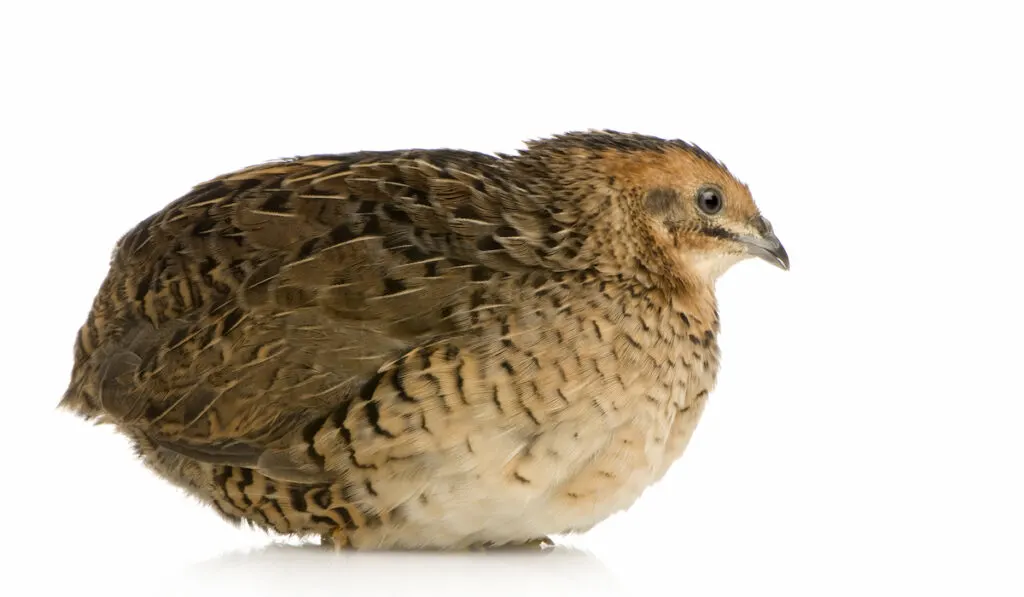
The first farm-friendly quail on this list is the Coturnix Quail, also known as the Japanese Quail. Coturnix Quails come in different colors, although some colors can be gender-specific.
Male Coturnix Quails have rusty orange necks and chests. However, those of the females are mottled with white breasts.
Coturnix Quails are dual-purpose birds and are raised for both meat and egg production. They reach sexual maturity when they are 6-9 weeks old and start laying eggs.
A female Coturnix Quail can lay around 200 eggs in her first laying season. You can harvest Coturnix Quails for meat once they are 9-11 weeks old.
The average weight of a Coturnix Quail is about 5 ounces. In the wild, Coturnix Quails have a life span of 2-3 years.
Coturnix Quails are calm, easy to raise, and they are ideal for first-time quail farmers. You can choose from several varieties of Coturnix Quail, including Texas A & M, Jumbo Brown, Tuxedo, and Pharoah Coturnix Quail.
2. California Quail
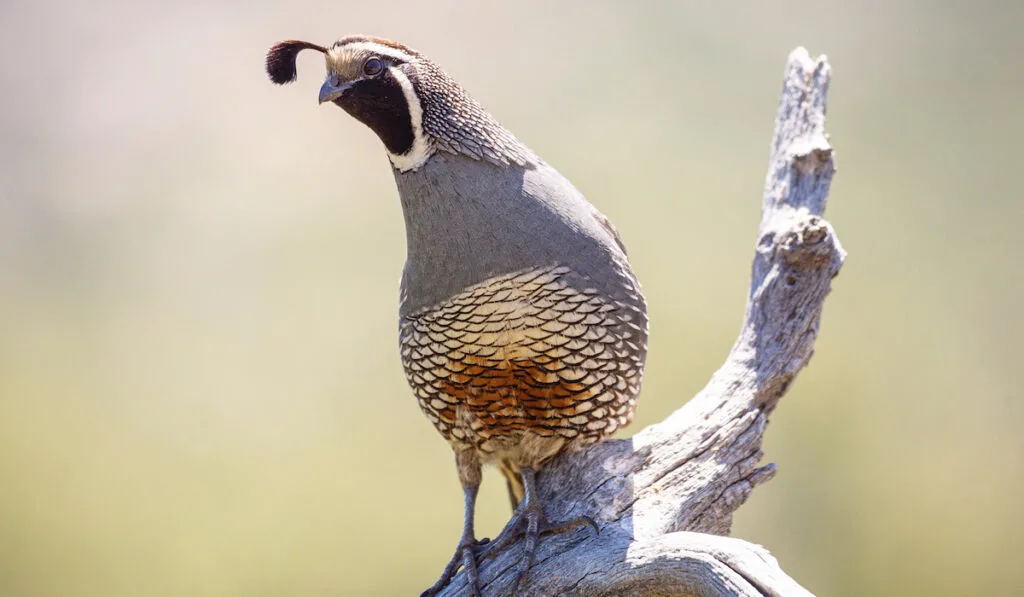
The California Quail is indigenous to New Zealand, Western United States, Chile, and British Columbia. California Quail prefer to inhabit farms, broken chaparral, parks, woodland edges, and coastal shrubs.
The overall color of the California Quail plumage is brown and bluish-grey. The most distinctive feature of a California Quail is the double plume or tear-drop-shaped plume on its forehead.
California Quail have a unique black and white pattern on their face. However, their belly has brown and black feather tips that look like scaled underpants.
California Quail have chestnut-colored crowns with streaks along the sides. They also have grey legs and black bills. Male California Quail have black throats, while females have greenish throats with black stripes.
California Quail weigh an average of 5-7 ounces, with males being slightly heavier. At maturity, California Quail can reach 9.8 inches in length.
Female California Quail can lay 6-28 white to pale buff eggs with an average of 13-17 eggs. The incubation period for the eggs is usually 22-23 days. They have an average lifespan of 7 years in the wild.
The diet of a California Quail consists of leaves, berries, insects, bulbs, and seeds. Due to their unique looks, California Quail are raised as pets or for shows. California Quail will make a great addition to an aviary with small parrots, finches, or softbills.
3. Button Quail
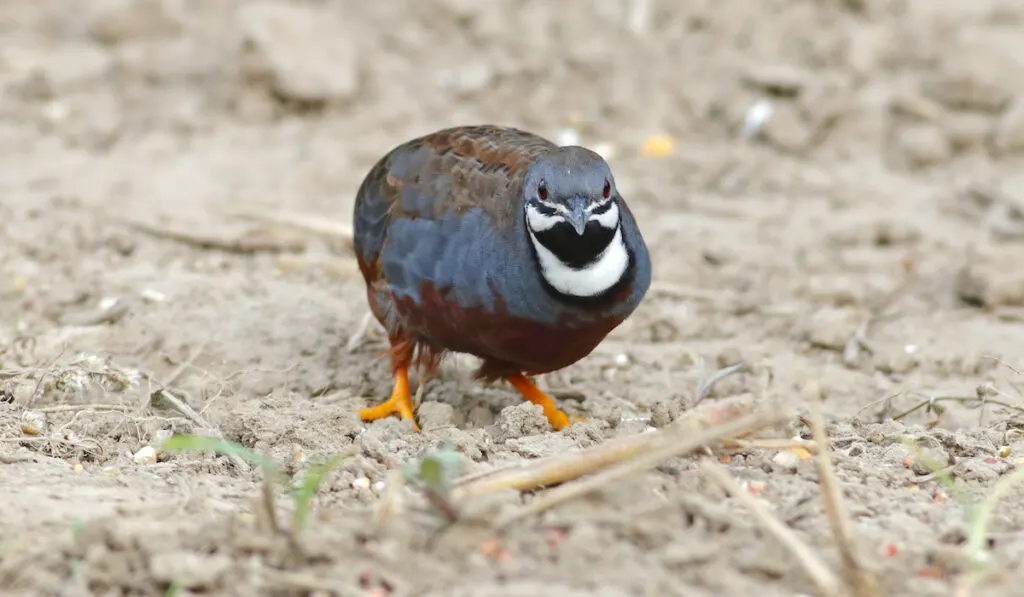
The Button Quail, also known as King Quail, Blue-Breasted Quail, or Chinese Painted Quail, is a popular quail species among poultry owners. In the wild, the range of a Button Quail stretches from Southeast Asia to Oceania.
Button Quails are beautiful and colorful birds. Male Button Quails come in various colors, including dark brown, blue, reddish-brown, and silver. Female Button Quails are similar to the male but do not appear in shades of blue.
Button Quails mature very fast and can reach full maturity at about 12 weeks old. Button Quails are small-sized birds weighing an average of 1.5-2 ounces.
Button Quails produce 5-13 small cream-colored eggs each laying season. Due to the stress of egg-laying, Button Quails tend to die quickly.
In the wild, Button Quails live for 1.5 years. But in captivity, they can live for 13 years with an average life span of 3-6 years. Button Quails make an excellent addition to any aviary, and they also make good pets.
4. Mearns Quail
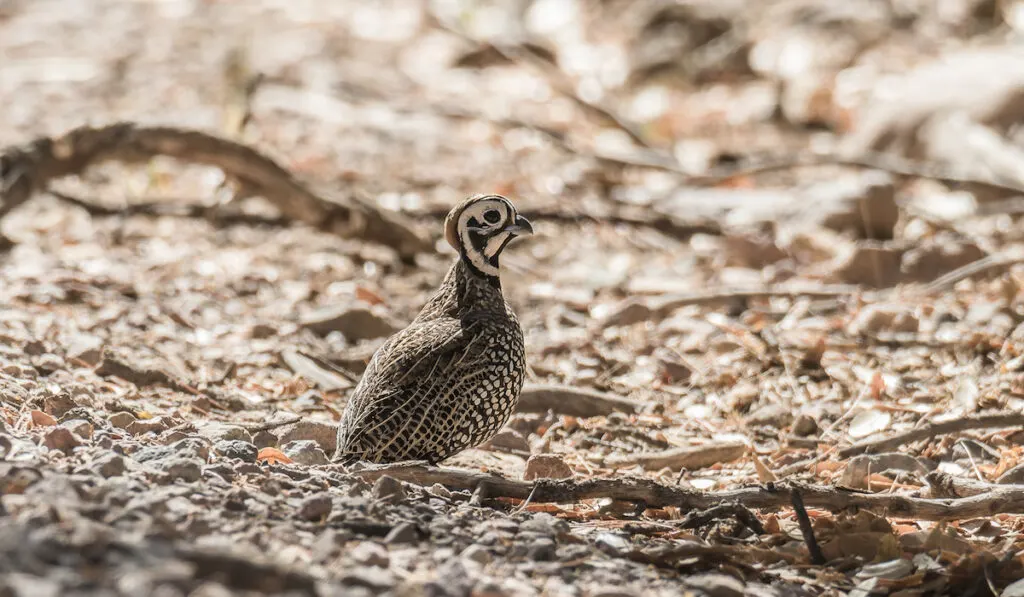
Mearns Quails are colorful and attractive birds with a shorter and fuller build than most quail species. Mearns Quails inhabit western Texas, the mountains and deserts of northern Mexico, New Mexico, central and southern Arizona.
Male Mearns Quails are colorful with white and black facial markings, often termed spinning or harlequin. They have brown sides with white spots.
Their backs are also brown but with white darts. Females are a lighter shade of brown with black, dark brown, or buff markings.
Male Mearns Quails at maturity can weigh an average of 6.9 ounces, with females weighing an average of 6.2 ounces. Female Mearns Quails have an average clutch size of 10-12 eggs. The incubation period is 25-26 days and is done by both males and females.
In the wild, most Mearns Quail may not live through their first year. If they do live past their first year, they can live for up to 4 years, while those in captivity can reach 7 years of age.
5. Bobwhite Quail
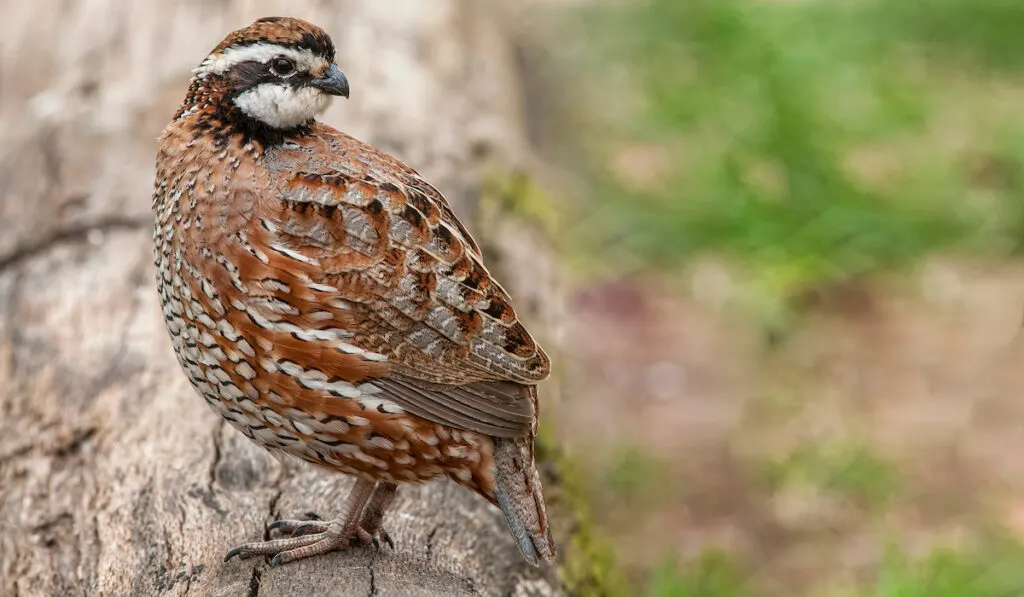
The Northern Bobwhite Quail is a popular quail breed used for hunting, although they are also a good source of meat. Bobwhite Quails are common in eastern North America.
You may find them in trees, open forests, pastures, and agricultural fields throughout the year.
The Bobwhite Quail matures slowly; it takes about 16 weeks for these quails to become adults. Bobwhite Quails tend to be aggressive when breeding, especially in the absence of a partner.
Females can lay about 100 eggs each laying season, with an average of 12 eggs per litter. The lifespan of a Bobwhite Quail is around 5 years.
There are about 22 subspecies of Bobwhite Quails. Bobwhite Quails are very active birds. However, they quickly get stressed.
If you decide to raise Bobwhite Quails, you should ensure they have enough space to roam free. So, if you are looking to raise quail for sport, then the Bobwhite Quail is your best bet.
6. Gambel Quail
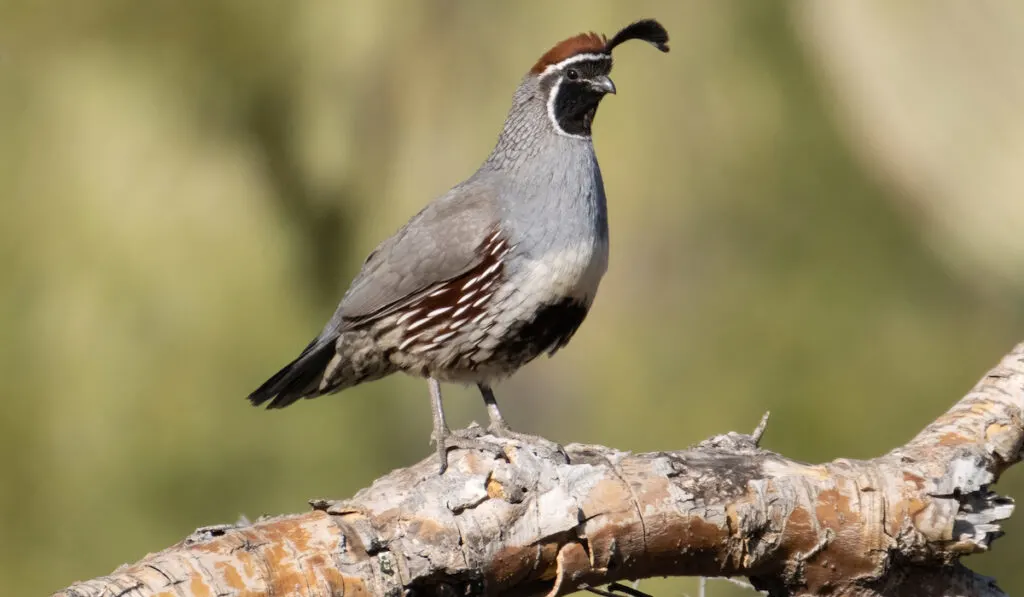
The Gambel Quail or desert quail is indigenous to Texas, Colorado, New Mexico, and Arizona. Gambel Quails are small birds with bluish-grey plumage and scaly feathers. The most prominent feature of this quail is the black turf on their foreheads shaped like a comma.
Male Gambel Quails have black faces surrounded by a layer of white feathers. The feathers on the top of their heads are copper-colored. Females have grey-colored necks and faces with their turf slightly smaller than that of the male.
Adult Gambel Quails can weigh an average of 6 ounces and measure up to 11-12 inches in length. The typical clutch size of a female Gambel Quail is 9-14 eggs with an incubation period of 21-24 days, and she lays once a year.
In the wild, Gambel Quails can live for 1.5-2 years. But in captivity, they can live for more than 5 years. The diet of a Gambel Quail consists mainly of plants, grasses, and seeds.
7. Mountain Quail
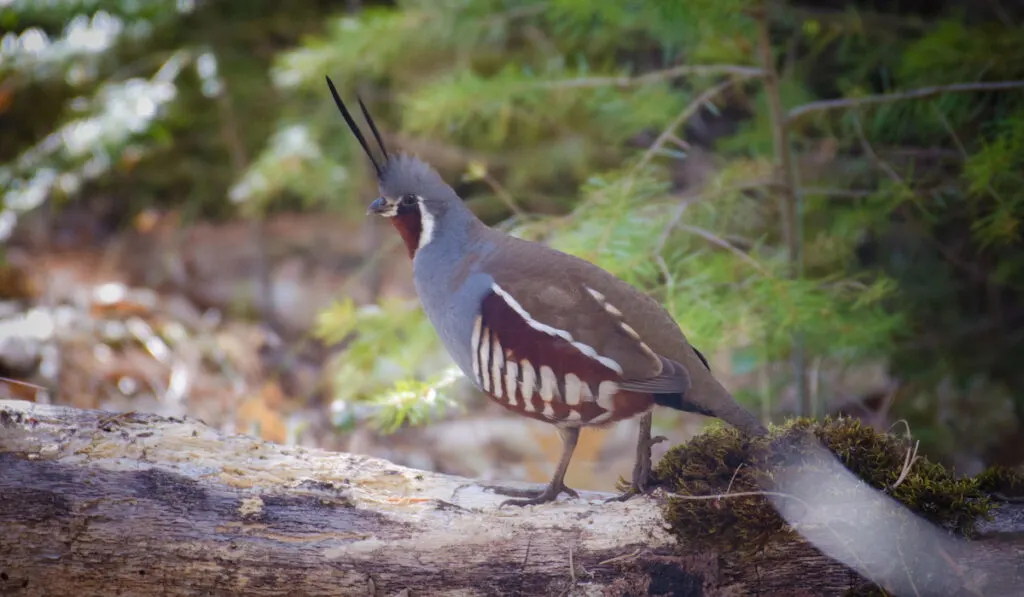
The Mountain Quail is a small bird that is a member of the New World quail family. Mountain Quails inhabit different habitats, but they prefer to live in dense brush in mountains and foothills. Although they can fly, they mostly move on foot.
Mountain Quails are usually reddish-brown, grey, or white. Mountain Quails are easily identified by the sharp-looking plume on the top of their heads.
Mountain Quails have a wingspan of 13-15 inches and can measure an average of 10-11 inches in length. They have long featherless legs with short round wings.
Mountain Quails are the largest in the United States, and at maturity, can weigh about 9 ounces. Female Mountain Quails lay 9-10 eggs per season.
The incubation period is 20-26 days which is usually done by both sexes. Mountain Quail have a short life expectancy living to about three years old.
Raising Mountain Quails can be difficult, and they can become aggressive when they mature. The diet of a Mountain Quail consists of insects, seeds, berries, bulbs, and leaves, although their diet varies as the season changes.
8. Scaled Quail

The Scaled Quail is also known as Cotton Top Quail or Blue Quail, and it is native to the southwestern region of the United States. It also belongs to the New World quail family and has a range that covers most of the western half of Texas.
Scaled Quails prefer to inhabit arid environments and are less likely to be seen in areas with abundant rainfall.
The name Scaled Quail comes from its bluish-grey plumage embellished, which has a scaled feather pattern. Male Scaled Quails have cream-colored throats while females have brown throats.
Female Scaled Quails are strong layers usually laying around 5-16 eggs with an average of 13 eggs in a clutch.
The incubation period for the eggs is about 22-23 days. An adult Scaled Quail can measure about 9.8-13 inches in length with an average wingspan of around 14 inches.
The average lifespan of a Scaled Quail in captivity is about seven years. But in captivity, this decreases to 1.5 years. The main diet of a Scaled Quail consists of insects, berries, green leaves, and seeds.
Scaled Quails are calm, gentle birds that will make an excellent addition to any backyard farm.
9. Jungle Bush Quail
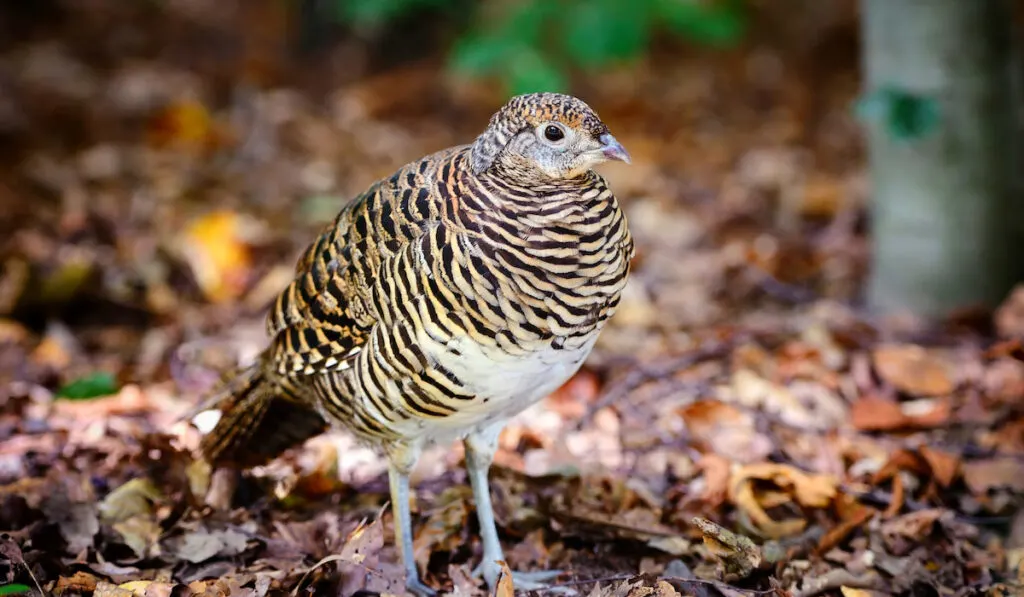
Jungle Bush Quail are indigenous to South Asia, specifically Sri Lanka and India.
Jungle Bush Quails prefer to inhabit stony grasslands, open forests, and dry scrubs. You can find Jungle Bush Quails at altitudes of 3900 feet.
Jungle Bush Quails have chestnut throats and chins with dark brown ear coverts. Their abdomen and breasts are white with unique transverse black stripes. They also have chestnut-brown tails with reddish-brown coverts.
Jungle Bush Quails have orange-yellow feet and legs and brown beaks with black tips. They also have spurs on their feet. The difference between males the male and females is that females have uniform buff abdomen and breasts.
Adult Jungle Bush Quail can measure around 6-7 inches in length. Jungle Bush Quail hens lay around 4-9 cream-colored eggs each laying season. The incubation period for the eggs is 21 days.
The diet of a Jungle Bush-Quail consists of seeds, weeds, and grasses. Jungle Bush Quails are an excellent addition to any aviary.
Resources:
- https://farmingmethod.com/best-quail-breeds/
- https://hellohomestead.com/a-guide-to-types-of-quail/
- https://www.hobbyfarms.com/best-quail-breeds-raise/
- https://backyardpoultry.iamcountryside.com/poultry-101/5-quail-species-to-raise/
- https://cs-tf.com/quail-breeds/
- https://animaldiversity.org/accounts/Perdicula_asiatica/
- https://www.purelypoultry.com/mearns-quail-p-1057.html
- https://animaldiversity.org/accounts/Oreortyx_pictus/
- https://www.audubon.org/field-guide/bird/mountain-quail
- https://wildlife.tamu.edu/scaled-quail-reversing-the-quail-decline-initiative/
- https://www.audubon.org/field-guide/bird/california-quail
- https://animaldiversity.org/accounts/Callipepla_californica/
- https://indianbirds.thedynamicnature.com/search?q=jungle+bush+quail
